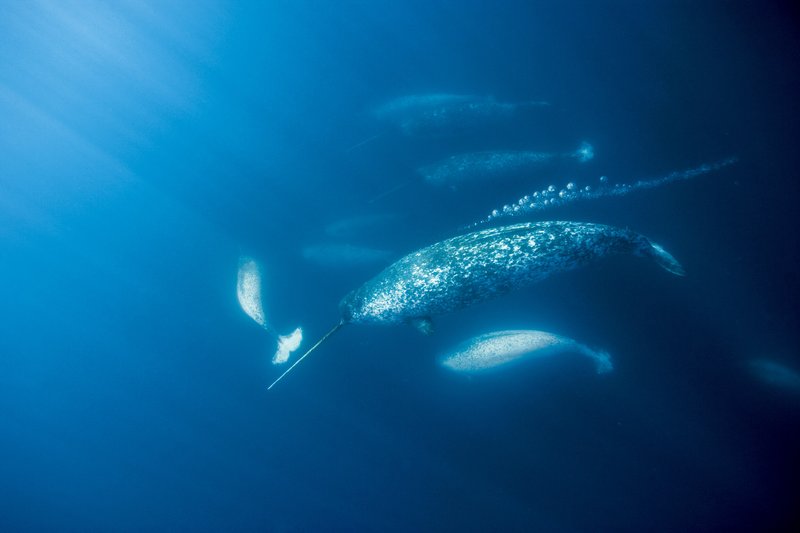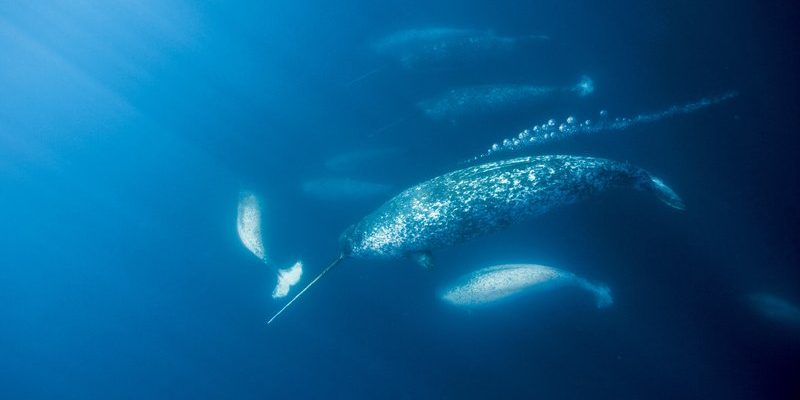
When we think of wildlife conservation, we often think about the more popular animals—like elephants or tigers. However, the narwhal, with its elusive nature and remote habitat, doesn’t always get the attention it deserves. Just like a ship lost in the vast sea, narwhals are navigating a world full of dangers. From climate change to hunting pressures, let’s dive into the common threats to these incredible animals and explore why their survival matters.
Climate Change and Its Impact
One of the biggest threats to narwhals is climate change. As global temperatures rise, the Arctic is warming faster than any other region on Earth. This change affects the entire ecosystem. Think of it like a ripple effect in a pond; when something big shifts, everything else feels it too.
The melting ice reduces the narwhals’ habitat, making it harder for them to find the food they rely on, such as fish and squid. With less ice, they also lose their resting and breeding grounds. Imagine trying to find a safe place to relax after a long day, only to realize that the spot you usually go to no longer exists. This creates stress for narwhals, impacting their health and reproduction rates.
Additionally, as the ocean warms, it alters the distribution of prey species. Narwhals are adapted to hunt specific fish that thrive in cold water. If those fish move elsewhere due to rising temperatures, the narwhals must travel further to find food, putting extra strain on their already vulnerable populations.
Commercial and Traditional Hunting
Hunting poses a significant and ongoing threat to narwhals. Indigenous communities have hunted narwhals for centuries, using their meat, blubber, and tusks for food and cultural practices. While this traditional hunting is sustainable and carefully managed, commercial hunting for narwhal tusks has escalated in some areas.
The tusks can sell for high prices in markets, leading to illegal hunting that threatens the narwhal population. Imagine a precious artifact being snatched from its home—a similar scenario plays out when narwhals are hunted indiscriminately. It disrupts their social structures and reduces the number of these magnificent creatures in the wild.
Regulations to protect narwhals can help balance the need for cultural practices with conservation efforts, but achieving this balance is crucial. The conversation about sustainable hunting practices must continue.
Shipping and Industrial Activities
In our modern world, shipping routes through the Arctic are expanding due to melting ice and increased maritime traffic. This upsurge in shipping poses a real threat to narwhals. With more vessels in their habitat, narwhals face risks from collisions, underwater noise pollution, and habitat degradation.
Let’s think about this like a busy city street. If you’re trying to walk across the road, but cars are zooming by left and right, it’s hard to cross safely. For narwhals, the busy shipping lanes can disrupt their migratory routes, making it challenging for them to find food and mates.
Underwater noises from ships can interfere with their communication, which relies heavily on sound. This challenge can lead to stress and disorientation, further endangering individuals and populations. Noise pollution might not seem like a big deal, but for narwhals, it can be as disorienting as trying to have a conversation at a loud concert.
Pollution and Chemical Contaminants
Pollution is another pressing concern for narwhals. The Arctic is often viewed as remote and untouched, but it’s increasingly affected by *plastic waste*, oil spills, and toxic chemicals. These pollutants can accumulate in the food chain and impact narwhals directly when they consume contaminated prey.
Imagine biting into a delicious-looking apple only to find it’s been sprayed with harmful pesticides. For narwhals, every meal can be a gamble, with toxins building up in their bodies over time. This not only affects their health but also poses threats to their reproductive success, decreasing the chances of healthy calves being born.
Furthermore, oil spills can have catastrophic effects on their habitat, creating toxic environments where food sources are diminished. Keeping our oceans clean is essential, not just for narwhals, but for all marine life that shares these waters.
Ocean Acidification
Another indirect threat to narwhals is ocean acidification, which is a byproduct of climate change. As carbon dioxide levels rise, the oceans absorb more CO2, leading to increased acidity. This change can harm various marine species, especially those with shells, such as some of the narwhals’ prey.
Think of it as a slow poison; it may not produce immediate effects, but over time, it can disrupt entire ecosystems. If the foundational species of the food chain struggle to survive, the impacts will ripple up to larger creatures like narwhals. These animals depend on a healthy and balanced ecosystem to thrive, and with acidification, that balance is tipping.
Ultimately, the health of the ocean is directly linked to the survival of narwhals and countless other species. Preserving our oceans is paramount as we face these challenges together.
Conservation Efforts and Their Importance
With all these threats looming, it’s crucial to discuss conservation efforts. Organizations and governments worldwide are stepping up to protect narwhals and their habitats. These efforts include monitoring narwhal populations, regulating hunting, and advocating for policies that combat climate change.
One effective approach is creating marine protected areas (MPAs). Think of an MPA as a safe haven for narwhals to thrive without the pressures of hunting or industrial activities. These designated areas help ensure their habitat remains undisturbed, allowing them to find food, mate, and raise their young.
Moreover, public awareness plays a significant role. When people understand the plight of narwhals and the challenges they face, it fosters a sense of stewardship. Remember, when we all pitch in, even small actions can lead to big changes. Supporting sustainable practices, reducing plastic waste, and advocating for policies that protect marine life can contribute significantly to conservation efforts.
Narwhals are truly unique creatures that inhabit one of the world’s most remote environments. Unfortunately, they face numerous threats that impact their survival. From climate change and hunting to pollution and industrial activities, these challenges require our attention and action.
As we explore the beauty and mystery of the narwhal, it’s essential to remember that their existence reflects the health of our oceans and ecosystems. By understanding these threats and supporting conservation efforts, we can ensure that future generations will have the chance to marvel at narwhals in the wild. Together, we can help protect these enchanting animals—because every effort counts in the fight for their survival.

